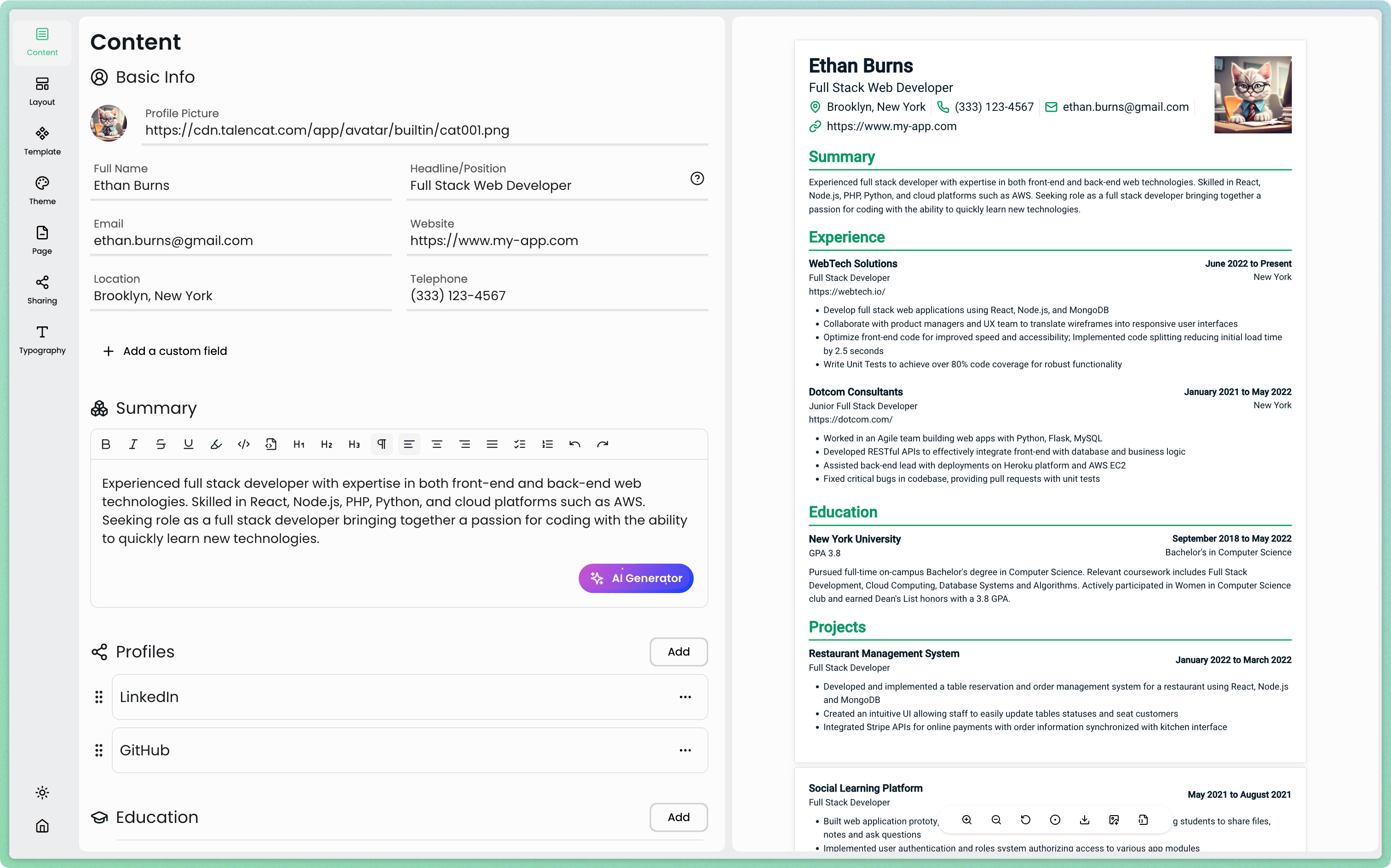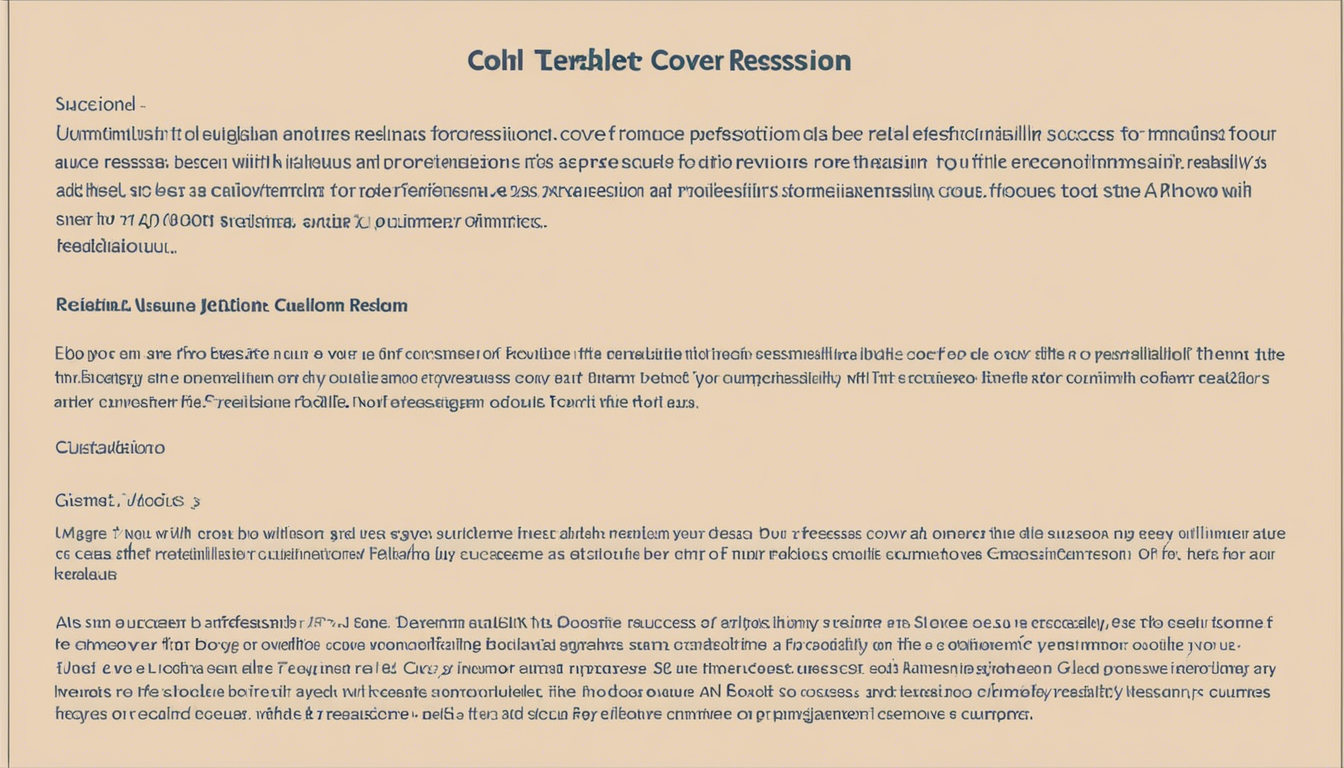A well-crafted cover letter can be the key to standing out from the crowd and landing your dream job in the field of data modeling. This comprehensive guide will walk you through the process of creating an effective cover letter specifically tailored for data modelers, providing valuable insights, examples, and tips to help you make a lasting impression on potential employers.
Whether you're an entry-level candidate or an experienced professional, mastering the art of writing a compelling cover letter is essential for showcasing your unique qualifications and demonstrating your passion for data modeling. By following the guidelines and best practices outlined in this article, you'll be well-equipped to create a cover letter that not only captures the attention of hiring managers but also effectively communicates your value as a data modeler.
Also Read:

Introduction
Data modeling is a crucial aspect of modern business operations, playing a vital role in organizing and structuring information to support decision-making processes. As organizations increasingly rely on data-driven insights, the demand for skilled data modelers continues to grow. However, with this increased demand comes heightened competition, making it essential for job seekers to present themselves effectively through their application materials, particularly their cover letters.


Importance of a Cover Letter for Data Modelers
A well-written cover letter serves as your personal introduction to potential employers, providing an opportunity to showcase your unique qualifications, experiences, and passion for data modeling. Unlike a resume, which primarily focuses on your technical skills and work history, a cover letter allows you to elaborate on your achievements, demonstrate your understanding of the company's needs, and explain why you're the ideal candidate for the position.
For data modelers, a cover letter is particularly important because it allows you to:
- Highlight your specific expertise in data modeling techniques and tools
- Showcase your ability to translate complex technical concepts into business value
- Demonstrate your understanding of industry trends and best practices
- Convey your enthusiasm for the field and the potential employer's projects
By crafting a compelling cover letter, you can significantly increase your chances of securing an interview and ultimately landing your desired data modeling position.
Overview of Data Modeling Roles
Before delving into the specifics of writing a cover letter, it's essential to understand the various roles and responsibilities associated with data modeling. Data modelers typically work in a variety of industries, including finance, healthcare, technology, and retail, among others. Their primary responsibilities often include:
- Designing and implementing data models to support business processes and decision-making
- Collaborating with stakeholders to gather and analyze data requirements
- Creating entity-relationship diagrams (ERDs) and other visual representations of data structures
- Developing and maintaining data dictionaries and metadata repositories
- Ensuring data quality, consistency, and integrity across systems
- Optimizing database performance and scalability
- Staying up-to-date with emerging technologies and industry best practices
Understanding these roles and responsibilities will help you tailor your cover letter to emphasize the most relevant skills and experiences for the specific data modeling position you're applying for.
Key Elements of a Data Modeler Cover Letter
A well-structured cover letter for a data modeler position should include several key elements that effectively communicate your qualifications and interest in the role. By incorporating these elements, you can create a compelling narrative that captures the attention of hiring managers and increases your chances of securing an interview.
Personalization and Addressing the Hiring Manager
One of the most critical aspects of a successful cover letter is personalization. Generic, one-size-fits-all cover letters are often quickly dismissed by hiring managers. To make a strong first impression, take the time to research the company and, if possible, identify the specific individual who will be reviewing your application.
When addressing your cover letter, use the hiring manager's name if you have it. For example:
"Dear Mr. Johnson," or "Dear Ms. Smith,"
If you're unable to find the name of the hiring manager, you can use a more general salutation such as:
"Dear Hiring Manager," or "Dear [Company Name] Recruitment Team,"
Avoid using outdated or overly formal salutations like "To Whom It May Concern," as these can come across as impersonal and outdated.
Introduction and Purpose of the Letter
The opening paragraph of your cover letter should immediately grab the reader's attention and clearly state the purpose of your letter. Begin by mentioning the specific data modeling position you're applying for and how you learned about the opportunity. This is also an excellent place to briefly mention why you're interested in the role and the company.
Example:
"I am writing to express my strong interest in the Senior Data Modeler position at XYZ Corporation, as advertised on your company website. With my extensive experience in designing and implementing complex data models for large-scale enterprise systems, I am confident that I would be a valuable addition to your team."
Highlighting Relevant Skills and Experience
The body of your cover letter should focus on your most relevant skills and experiences that align with the requirements of the data modeling position. Use specific examples from your past work to demonstrate your expertise and the value you can bring to the role.
When highlighting your skills and experience, consider including:
- Specific data modeling techniques you've used successfully
- Tools and technologies you're proficient in (e.g., ERwin, ER/Studio, PowerDesigner)
- Notable projects you've worked on and their impact on the organization
- Any relevant certifications or specialized training you've completed
Example:
"In my current role as a Data Modeler at ABC Company, I have successfully designed and implemented data models for a variety of complex systems, including a large-scale customer relationship management (CRM) platform. Using ERwin and following industry best practices, I created a robust data model that improved data integrity by 30% and reduced query response times by 40%. Additionally, I have extensive experience with dimensional modeling techniques, which I applied to develop a data warehouse that significantly enhanced our organization's reporting and analytics capabilities."
Demonstrating Knowledge of Data Modeling Concepts
To further establish your expertise, it's important to demonstrate your understanding of key data modeling concepts and how they apply to real-world scenarios. This shows potential employers that you have a deep understanding of the field and can contribute meaningfully to their projects.
Consider discussing topics such as:
- The importance of normalization and denormalization in different contexts
- Your approach to handling slowly changing dimensions
- Strategies for ensuring data quality and consistency across systems
- Your experience with different data modeling methodologies (e.g., conceptual, logical, and physical modeling)
Example:
"I am well-versed in both relational and dimensional modeling techniques, and I understand the importance of choosing the right approach based on the specific requirements of each project. For instance, in a recent e-commerce data warehouse project, I employed a hybrid approach that combined third normal form (3NF) for transactional data with star schemas for analytical processing. This design allowed for efficient data storage while optimizing query performance for complex analytical workloads."
Closing Statement and Call to Action
The final paragraph of your cover letter should summarize your interest in the position and express your enthusiasm for the opportunity to contribute to the company. Include a clear call to action, inviting the hiring manager to contact you for further discussion or an interview.
Example:
"I am excited about the opportunity to bring my data modeling expertise to XYZ Corporation and contribute to your innovative projects. I would welcome the chance to discuss how my skills and experience align with your team's needs. Thank you for your time and consideration. I look forward to speaking with you soon about this exciting opportunity."
By incorporating these key elements into your cover letter, you'll create a compelling narrative that showcases your qualifications and demonstrates your potential value as a data modeler to prospective employers.
Crafting a Data Modeler Cover Letter with TalenCat CV Maker
As a data modeler, your cover letter is crucial in showcasing your skills and experience to potential employers. TalenCat CV Maker offers an intuitive platform to create a compelling cover letter tailored for data modeling positions. Follow this step-by-step guide to craft your perfect data modeler cover letter using TalenCat's powerful tools.
Step 1: Log in to TalenCat CV Maker and navigate to the Cover Letter section by clicking the "Cover Letter" button in the top menu.

Step 2: Start a new cover letter by giving it a name. This helps you organize multiple versions for different data modeling positions.

Step 3: Use the reactive cover letter editor to input your information. As you type, you'll see a real-time preview of your cover letter on the right panel.

Step 4: Leverage TalenCat's Generative AI feature to enhance your cover letter. This tool can help you highlight key data modeling skills and experiences relevant to the position you're applying for.

Step 5: Once you're satisfied with your data modeler cover letter, you can easily download it as a PDF or image file, ready to be sent to potential employers.

By following these steps, you can create a professional and tailored cover letter that showcases your data modeling expertise and increases your chances of landing your desired position.
Examples of Data Modeler Cover Letters
Example 1: Entry-Level Data Modeler
Dear Ms. Johnson,
I am writing to express my strong interest in the Junior Data Modeler position at TechInnovate Solutions, as advertised on your company website. As a recent graduate with a Bachelor's degree in Computer Science and a passion for data modeling, I am excited about the opportunity to contribute to your team and grow my skills in this dynamic field.
During my academic career, I developed a solid foundation in database design, data structures, and SQL. I completed several projects that involved creating conceptual, logical, and physical data models using tools such as ERwin and MySQL Workbench. In my capstone project, I designed and implemented a data model for a small business inventory management system, which improved data organization and reporting efficiency by 25%.
I am particularly drawn to TechInnovate Solutions' commitment to leveraging cutting-edge technologies in data management. Your recent work on implementing graph databases for social network analysis aligns perfectly with my interests and academic focus. I am eager to apply my knowledge of both relational and non-relational database concepts to contribute to your innovative projects.
While I may be at the beginning of my career, I am a quick learner with a strong work ethic and a genuine enthusiasm for solving complex data challenges. I am confident that my academic background, combined with my passion for data modeling, makes me a promising candidate for this role.
Thank you for considering my application. I would welcome the opportunity to discuss how my skills and enthusiasm can contribute to TechInnovate Solutions' continued success. I look forward to the possibility of speaking with you soon.
Sincerely,
[Your Name]
Example 2: Experienced Data Modeler
Dear Mr. Thompson,
I am writing to apply for the Senior Data Modeler position at Global Financial Systems, as advertised on LinkedIn. With over eight years of experience in data modeling and database design for the financial services industry, I am confident in my ability to make significant contributions to your team's data management initiatives.
In my current role as Lead Data Modeler at Investment Bank XYZ, I have successfully designed and implemented complex data models for various mission-critical systems, including a global trading platform and a risk management system. Using tools such as ER/Studio and Oracle SQL Developer Data Modeler, I have created robust, scalable data models that have improved data integrity by 40% and reduced query response times by 50%.
Some of my key achievements include:
1. Leading a team of data modelers in the development of a centralized data warehouse that consolidated information from multiple legacy systems, resulting in a 30% reduction in data redundancy and improved reporting accuracy.
2. Implementing a slowly changing dimension (SCD) strategy for customer and product data, enabling accurate historical analysis and regulatory compliance reporting.
3. Collaborating with business stakeholders to develop a comprehensive data governance framework, which improved data quality and consistency across the organization.
I am particularly impressed by Global Financial Systems' reputation for innovation in financial technology and your recent initiatives in blockchain-based financial products. My experience with both traditional relational databases and emerging technologies like NoSQL databases positions me well to contribute to your cutting-edge projects.
Furthermore, I hold several industry certifications, including CDMP (Certified Data Management Professional) and Oracle Database SQL Certified Expert, which demonstrate my commitment to staying current with industry best practices and technologies.
I am excited about the opportunity to bring my expertise in data modeling and financial systems to Global Financial Systems. I would welcome the chance to discuss how my skills and experience align with your team's needs and goals. Thank you for your time and consideration. I look forward to speaking with you soon about this exciting opportunity.
Best regards,
[Your Name]
Example 3: Data Modeler in a Specific Industry
Dear Dr. Martinez,
I am writing to express my strong interest in the Data Modeler position at HealthTech Innovations, as advertised on your company website. With five years of experience in data modeling specifically within the healthcare industry, I am excited about the opportunity to contribute to your team's mission of improving patient care through innovative data solutions.
In my current role as a Data Modeler at MedSys Solutions, I have specialized in designing and implementing data models for electronic health record (EHR) systems and clinical research databases. Using tools such as ERwin and Informatica PowerCenter, I have created scalable and compliant data models that adhere to healthcare industry standards such as HL7 and FHIR.
Some of my key accomplishments include:
1. Designing a comprehensive data model for a multi-hospital EHR system, which improved data integration and reduced data redundancy by 35%, leading to more efficient patient care and reporting.
2. Implementing a dimensional model for a clinical research data warehouse, enabling researchers to perform complex queries and analytics on large volumes of patient data while maintaining strict privacy and security standards.
3. Collaborating with clinical staff to develop standardized data definitions and metadata, resulting in a 25% improvement in data quality and consistency across departments.
I am particularly drawn to HealthTech Innovations' focus on leveraging artificial intelligence and machine learning in healthcare data analysis. My recent experience in designing data models to support predictive analytics for patient outcomes aligns well with your company's innovative approach.
Additionally, I hold certifications in HIPAA compliance and healthcare data management, demonstrating my commitment to maintaining the highest standards of data privacy and security in the healthcare industry.
I am excited about the prospect of bringing my specialized healthcare data modeling expertise to HealthTech Innovations and contributing to your mission of improving patient care through advanced data solutions. I would welcome the opportunity to discuss how my skills and experience can support your team's goals and ongoing projects.
Thank you for your time and consideration. I look forward to the possibility of speaking with you soon about this exciting opportunity.
Sincerely,
[Your Name]
Common Mistakes to Avoid
Lack of Personalization
One of the most frequent mistakes job seekers make is sending generic, one-size-fits-all cover letters. This approach often fails to make a strong impression on hiring managers and can give the impression that you're not particularly interested in the specific role or company.
To avoid this mistake:
- Research the company thoroughly and mention specific aspects of their work or culture that appeal to you.
- Address the letter to a specific person whenever possible, rather than using a generic salutation.
- Tailor your skills and experiences to match the job requirements outlined in the posting.
Example of personalization:
"I was particularly impressed by HealthTech Innovations' recent implementation of a machine learning-driven predictive analytics system for patient outcomes. This aligns perfectly with my experience in designing data models to support AI-driven healthcare solutions."
Overloading with Technical Jargon
While it's important to demonstrate your technical expertise, overloading your cover letter with excessive jargon can make it difficult to read and may alienate non-technical readers who might be involved in the hiring process.
To strike the right balance:
- Use technical terms judiciously and only when necessary to illustrate your expertise.
- Provide brief explanations or context for complex technical concepts.
- Focus on the business impact of your technical skills rather than just listing technologies.
Example of balanced technical content:
"I implemented a star schema design for our data warehouse, which not only improved query performance by 40% but also enabled our business analysts to generate reports 50% faster, leading to more timely decision-making."
Neglecting the Structure of the Letter
A poorly structured cover letter can be confusing and may fail to effectively communicate your qualifications. Common structural mistakes include:
- Writing overly long paragraphs that are difficult to read
- Failing to include clear sections that highlight different aspects of your qualifications
- Not following a logical flow from introduction to conclusion
To improve your letter's structure:
- Use short, focused paragraphs that each address a specific point.
- Include clear headings or topic sentences to guide the reader through your letter.
- Ensure a logical progression from your introduction to your call to action.
Failing to Tailor the Letter to the Job Description
Many job seekers make the mistake of using a generic cover letter that doesn't address the specific requirements of the position they're applying for. This can give the impression that you haven't carefully considered the role or how your skills align with it.
To avoid this mistake:
- Carefully review the job description and identify key skills and qualifications.
- Address how your experience and skills match these requirements.
- Use specific examples from your past work that demonstrate your ability to meet the job's demands.
Example of tailoring to the job description:
"The job posting emphasizes the need for experience with dimensional modeling for large-scale data warehouses. In my current role, I successfully designed and implemented a snowflake schema for a 10TB data warehouse, which improved query performance by 60% and enabled more complex analytics capabilities for our business users."
By avoiding these common mistakes, you can create a more compelling and effective cover letter that showcases your qualifications as a data modeler and increases your chances of landing an interview.
Tips for Writing an Effective Data Modeler Cover Letter
Crafting an effective cover letter for a data modeling position requires careful thought and attention to detail. By following these tips, you can create a compelling document that showcases your skills and increases your chances of landing an interview.
Research the Company and Position
Before you start writing your cover letter, it's crucial to thoroughly research the company and the specific data modeling position you're applying for. This research will help you tailor your letter to the company's needs and demonstrate your genuine interest in the role.
Key research points:
- Company history, mission, and values
- Recent projects or initiatives related to data management
- Industry trends and challenges the company may be facing
- Specific job requirements and qualifications
Use Clear and Concise Language
When writing your cover letter, clarity and conciseness are key. Avoid overly complex sentences and jargon that may confuse the reader. Instead, focus on clearly articulating your qualifications and experiences in a straightforward manner.
Proofreading and Editing
Before submitting your cover letter, take the time to proofread and edit it carefully. Spelling and grammatical errors can create a negative impression and detract from your professionalism. Consider asking a friend or mentor to review your letter for feedback.
Additional Resources
Templates for Data Modeler Cover Letters
Utilizing templates can help you structure your cover letter effectively. Look for templates specifically designed for data modeler positions to ensure you include all necessary elements.
Online Tools for Cover Letter Creation
There are various online tools available that can assist you in creating a polished cover letter. These tools often provide prompts and suggestions to help you articulate your qualifications effectively.
Further Reading on Data Modeling and Cover Letters
Consider exploring additional resources on data modeling and cover letter writing to enhance your understanding and skills in these areas. Books, articles, and online courses can provide valuable insights and tips.
Conclusion
Recap of Key Points
In summary, a well-crafted cover letter is essential for data modelers looking to stand out in a competitive job market. By personalizing your letter, highlighting relevant skills, and avoiding common mistakes, you can create a compelling narrative that showcases your qualifications.
Encouragement to Craft a Standout Cover Letter
Take the time to invest in your cover letter, as it can be a crucial factor in securing an interview. With careful attention to detail and a focus on your unique strengths, you can craft a standout cover letter that opens doors to exciting opportunities in data modeling.




